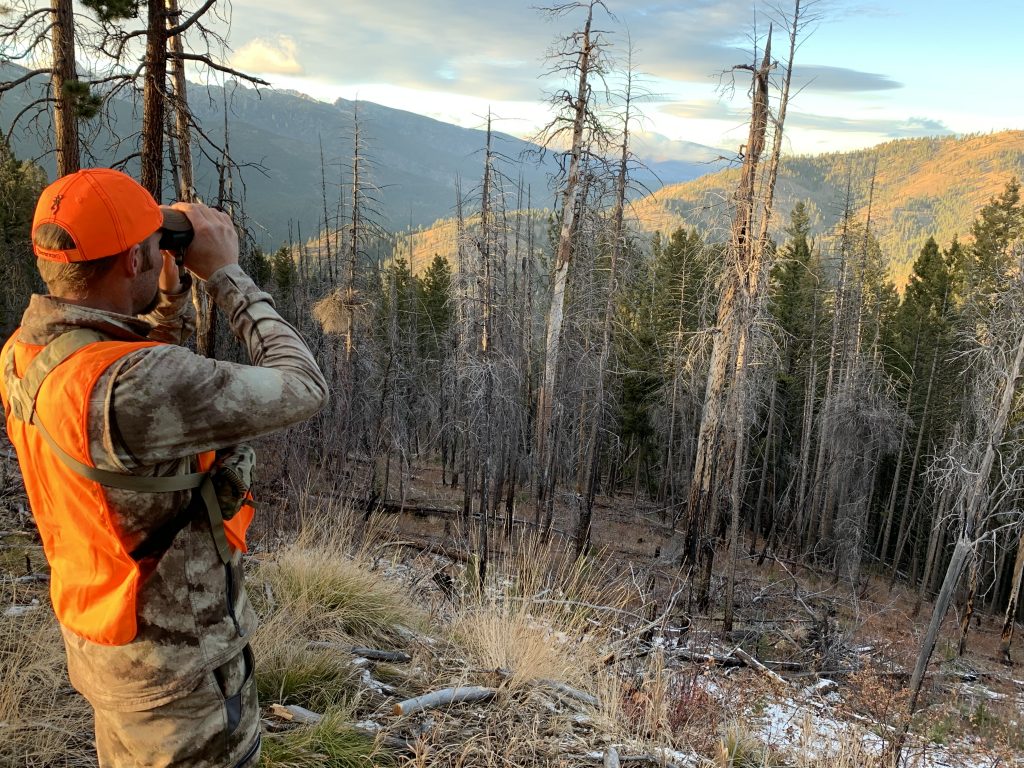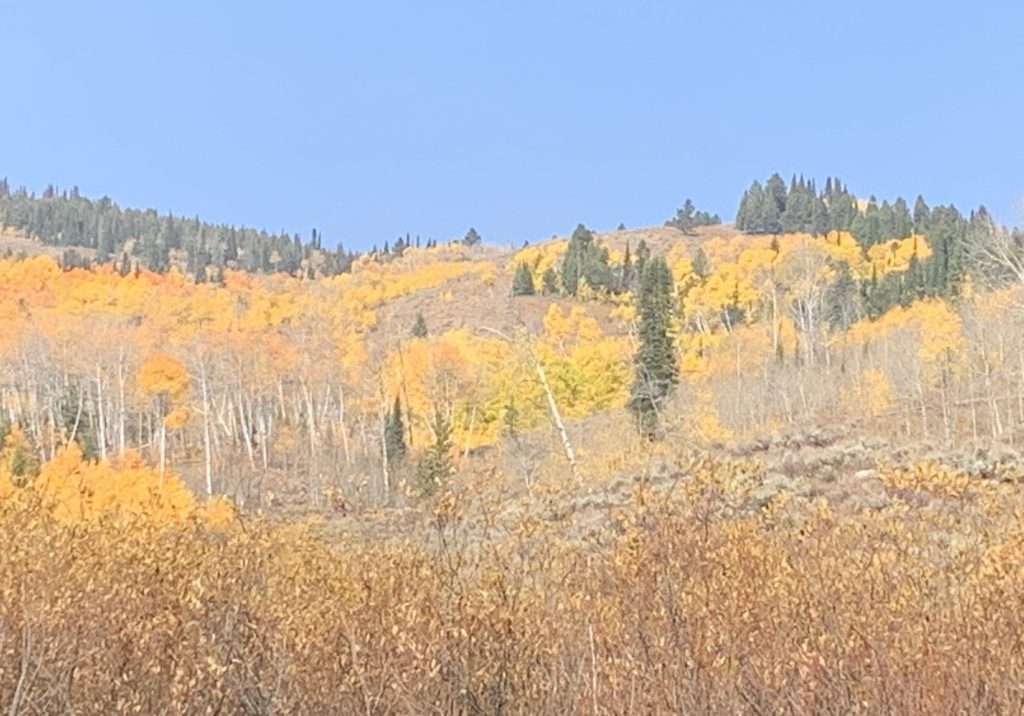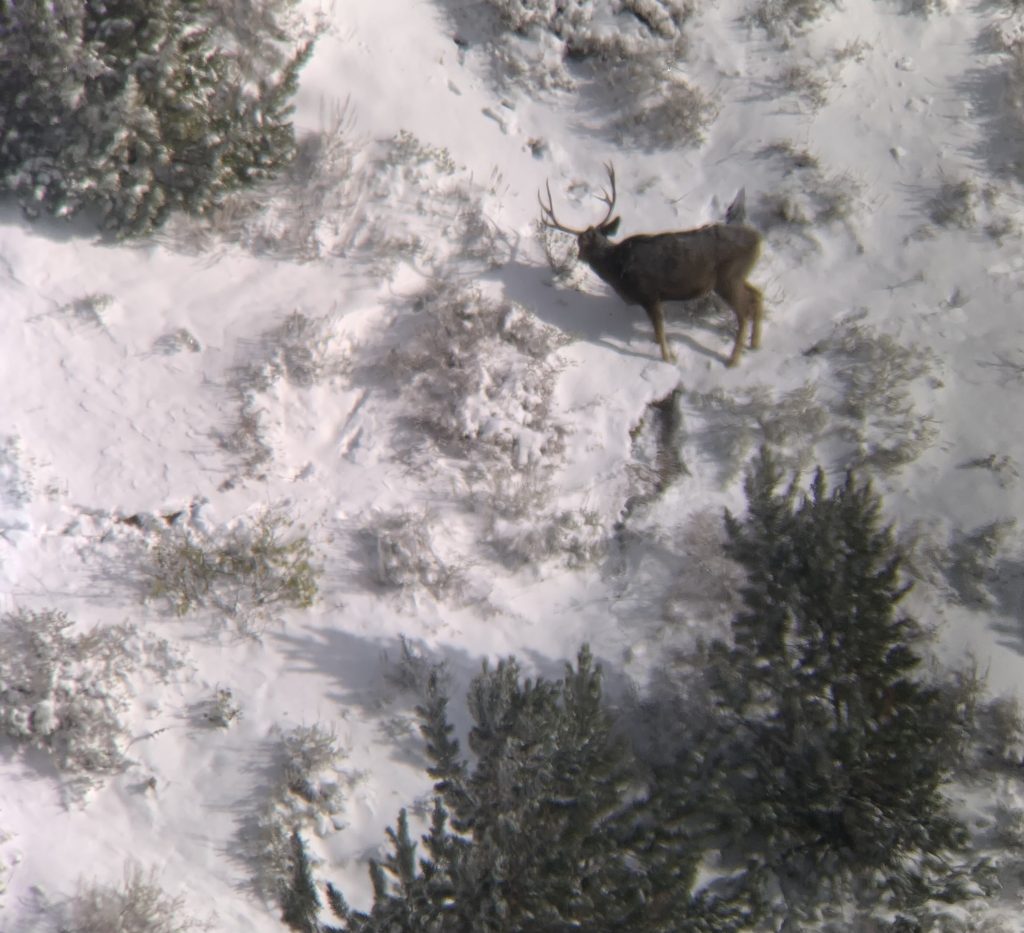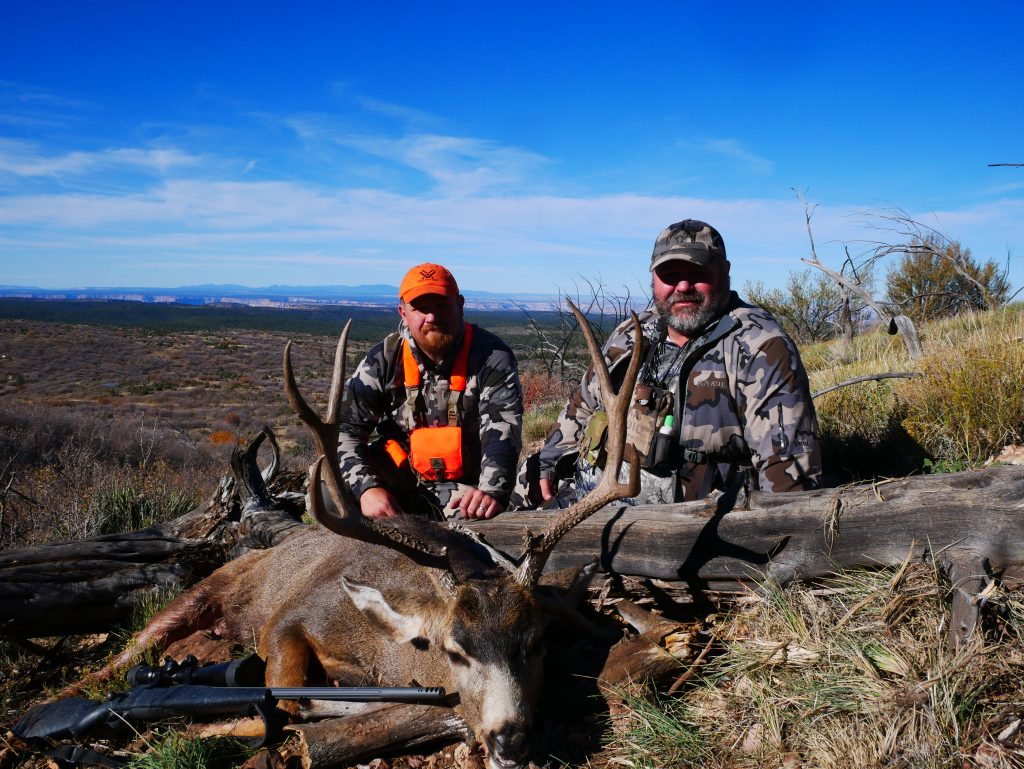Not every hunt for mule deer can happen during the early season or during the rut. If your tag falls outside of these two timeframes, learn how to identify and hunt mule deer transition areas and you’ll kill more deer.
by Zach Bowhay
As the September elk season wraps up every fall, I get a familiar feeling. With the long days of summer starting to give way to fall, the aspen leaves begin to turn, and that cold fall wind starts to blow; I suddenly have the urge to put down my bow, grab my rifle, and head to the high country in search of a mature mule deer buck.
I was raised by a man who loves bowhunting for elk. So, bowhunting for elk is what we did. Don’t get me wrong, my dad would take me deer hunting, but it was never to the degree that we got after the elk. As soon as I was old enough to drive, my buddies and I started hunting mule deer a lot. We had some success. Still, I wasn’t seeing or killing the caliber of bucks I desired after several years. Then, in the early 2000s, my buddy Virgil and I decided to hit the high country to kill big bucks. We bought new backpacking gear and hit the high country.
The Problem with High Country Basins
There aren’t many things more of a rush than spotting a big old mule deer buck in the high country above the tree line. When I got the mule deer bug, my goal was to have a kill picture of myself with one of these high-country monarchs. Fortunately, at this point, that goal has been realized a few times.

The problem is that many states have general seasons that I hunt, like Idaho and Wyoming. Others like Colorado, have season dates that aren’t always perfect for deer hunting. The seasons take place from mid-September to the end of October. At these times in these areas, all it takes is some bullets to start flying or some significant snowfall, and many bucks will vacate the high basins. Yes, it’s nice when the bucks head to lower ground, but this timeframe is well before the rut, and the bucks aren’t ready to head clear down where the ladies are.
Transition Areas
Once these bucks vacate their summer and early fall hangouts, where do they go? The answer is often not far. Soon after hunters hit the high country on opening weekend or a big snowfall hits, many of the bucks will drop out of the high basins and head for lower country. This isn’t necessarily to escape elevation but more centered around security and cover.
Those high basins leave them exposed and vulnerable to hunters with scoped rifles and cold winds accompanying snowy weather.
When this first happens, sometimes these bucks will immediately drop out of the high basins into the thick timber or cover below. When this happens, these bucks will spend a day or two here waiting to see if the hunting pressure will subside or the bad weather will pass. If it does, they will return to their preferred basin.

However, if these two factors don’t occur, these bucks will migrate to a transition area to spend the remainder of the fall leading up to the rut. The reason is that thick timber provides excellent cover and sometimes water, but their third need, which is good feed, often isn’t met in this setting.
Finding Transitions
As mentioned earlier, these areas often aren’t far from where the bucks spent their summer and early fall. These areas can consist of several types of cover, like scattered timber, aspen pockets, or hidden sagebrush draws. It would be best if you thought of it this way: these spots will be off-grid locations where the deer can feed without being completely exposed. These places must have three key elements, though, and they are feed, cover/security, and water.
It is essential to know where the deer you intend to hunt spend the rut and their winter. This information can be gained from experience in a particular area or talking to game and fish biologists or others who know the area. Once you know where the deer winter and where they spend their summer, it’s safe to say these transition areas are typically between the two regions.

Several years ago, my brother Jeremy and I drew early Kaibab deer tags in Arizona. This hunt started in late October and went into early November but ended before the rut kicked in. We never stepped foot in the unit before the hunt. Through our research, we determined where most of the deer spent their summer and where they went during the late fall and winter. We identified some good-looking transition areas by e-scouting the terrain between the two.

After I killed my buck early in the hunt, hunting pressure kicked in. Buck sightings were getting fewer by the day. So, we headed to some of these pre-determined transition areas. A couple of days later, Jeremy took a great, mature buck.
Think Macro and Micro
In all honesty, hunting these transition areas can be challenging. These bucks are often pressured and are in these areas by design because they find excellent security. On the macro level, I like to get back and get a vast, extensive view of the area. Identify areas where you know or anticipate the deer spending their summers. Then, glass the entire area from a long distance, looking for deer. If there is snow, you can also glass for tracks. When glassing for tracks in snow, you want to identify tracks that look like milling or feeding deer. Tracks that look like single-file deer heading out generally mean they are vacating the area. If you see tracks in a single-file line in the snow, get on those tracks. If you do, you’ll often find deer or learn more about where those deer go.

Once you have this area view, it’s time to focus on the micro; then it’s time to move closer via foot travel or vehicle, depending on the area, and get in closer and glass. Sometimes, these areas are tighter and more hidden, so you must get close to glass effectively. Get in close, set up, and glass and glass some more. Be in key areas early and late when the animals are out feeding, and pick apart the area during midday for bedded animals or a buck that gets up to stretch and feed throughout the day.
How to Hunt Them
When you are on the micro level and hike into these areas to glass, you will often set up within shooting or quick striking distance of a spotted buck. Sometimes, you aren’t and have to move to get in position for a shot.
Warning: these bucks are generally on edge, highly alert, and have a nearly foolproof exit plan in many situations. So, when the need arises to move on a buck, do it cautiously. If moving where a deer can see or hear you, you must be slow and deliberate. The best-case scenario is getting out of sight and earshot of the buck while making your final approach. Even if you lose sight of the buck for an extended period, taking the long way around usually pays off.

Once out of sight, move as fast as you can until you reach your pre-determined area where you expect to be able to shoot from. Once you are close, slow down again and be as quiet and stealthy as possible. Get in position, set up your rifle and glass, and be patient. Deer in these transition areas move around, feed, bed, and feed throughout the day. It’s better to sit, be patient, wait for him to stand, and move into position for a shot. Even if that means sitting for hours, this will almost always be the better route.
Rushing the situation, making noise to get him to stand, or anything of that nature will usually result in a rushed shot of a buck quickly leaving the area. Wait him out and take the best possible first shot presented to you.
Transition Your Hunt for More Success
Hunting transition areas is challenging but rewarding. People seem to hit it hard on the opener and then give up when the bucks become less visible and accessible to hunt. By keying in on transition areas, you will ultimately find more success. Deer in this timeframe are, in my opinion, the hardest to kill and will test your grit. Still, it’s worth the effort. It is extremely rewarding when you outwit an old buck on his terms and his environment. Good luck out there, and remember to enjoy the process.





